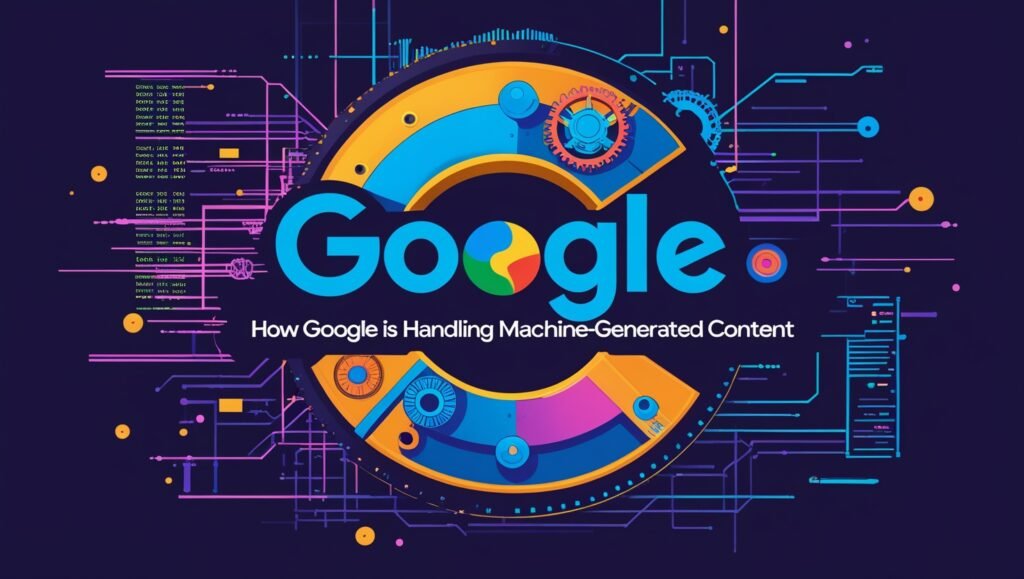You’ve probably heard the buzz around AI tools writing blog posts, product descriptions, and even news articles. This type of writing is called Machine-Generated Content, and it’s everywhere. But the big question is—what does Google think about it? After all, if your content doesn’t show up on Google, it won’t matter how good it is.
Let’s explore how Google is handling machine-generated content and what it means for your website’s SEO.
Google Isn’t Against AI—But It Wants Quality
Google has made it clear that it’s not against machine-generated content as long as it’s helpful and relevant to users. In the past, many people thought AI content would get flagged or banned. But that’s not true anymore.
What Google doesn’t want is low-quality content written only to trick the system. If the content is spammy, stuffed with keywords, or copied from somewhere else, it won’t rank—whether it’s written by a person or a machine.
So, machine-generated content is fine, but it needs to offer value. It should answer questions, solve problems, or give real insights. If it doesn’t help the reader, Google won’t rank it well.
Quality Is Still King
No matter how fast AI can write, Google still puts a strong focus on quality. That means your content must be original, accurate, and clear. Google’s helpful content system looks at how useful your content is to readers. If it’s only made to rank and not to help, your site could see lower rankings.
That’s why machine-generated content should always be checked and edited by a human. You want to make sure it reads naturally, is easy to understand, and gives the right information.
Google uses advanced systems to understand the meaning behind your content. It can often detect when something feels robotic or generic. If a post sounds like it was written without care, Google might ignore it.
E-E-A-T Still Matters
Google uses something called E-E-A-T to check the value of content. That stands for Experience, Expertise, Authoritativeness, and Trustworthiness.
Machine-generated content often lacks personal experience or expert knowledge. So, to boost your content’s chances, it’s important to add real-life examples, expert quotes, and links to trusted sources. Even if an AI writes the first draft, a human touch is needed to meet Google’s standards.
When Google sees content that’s trustworthy and created by someone with experience, it ranks it higher—even if part of it was machine-generated.
Transparency Is Key
Google wants honesty. If you’re using AI to help create content, that’s okay. But be honest with your readers. Many websites now add a note saying something like, “This article was created with the help of AI and reviewed by our editors.”
Being transparent builds trust. Readers will feel more comfortable knowing a human checked the content. Google also appreciates this openness because it shows you care about your users.
Don’t Publish Without Editing
One big mistake some websites make is publishing machine-generated content without any changes. That’s risky. AI tools can make errors or provide outdated facts. Even worse, they might create content that’s too generic to rank.
Always review your content carefully. Check for grammar, facts, tone, and usefulness. Add your own voice. This step is what turns AI content into something worth reading—and worth ranking.
Think of machine-generated content as a helper, not a full replacement. Let AI do the first draft and then polish it yourself.
Google’s Spam Policies Still Apply
Even though Google allows machine-generated content, it still watches for spam. That includes:
- Auto-generated text with no real meaning
- Duplicate content from other sites
- Keyword-stuffed articles
- Content created only to trick search engines
If your content feels spammy, Google can de-rank your entire site. This is why it’s important to focus on quality and originality—even when using machine-generated content.
Your goal should always be to help your audience. If your content answers real questions, explains ideas clearly, or solves problems, Google will reward it.
A Balanced Strategy Wins
At the end of the day, Google wants good content, no matter how it’s created. The best plan is to use machine-generated content wisely. Let it help you work faster, but never skip human editing and review.
Mix AI tools with expert input. Add unique ideas, real-life experience, and a personal voice. That way, you can create content that ranks well and serves your audience.
Machine-generated content is not a shortcut—it’s a tool. And when used correctly, it can help you grow your content faster without losing quality.
Final Thoughts
Google’s approach to machine-generated content is evolving. It no longer cares who wrote the content—it cares about how helpful it is. If your content helps readers, Google will notice.
So, use AI to get a head start. But always add your knowledge, check for mistakes, and make sure your content truly adds value.
Need help creating great content that ranks high and connects with your audience? Let Ayat Solutions guide your strategy. Our team blends smart tools and real expertise to deliver quality content that works. Reach out today to build a content plan that grows with you!

